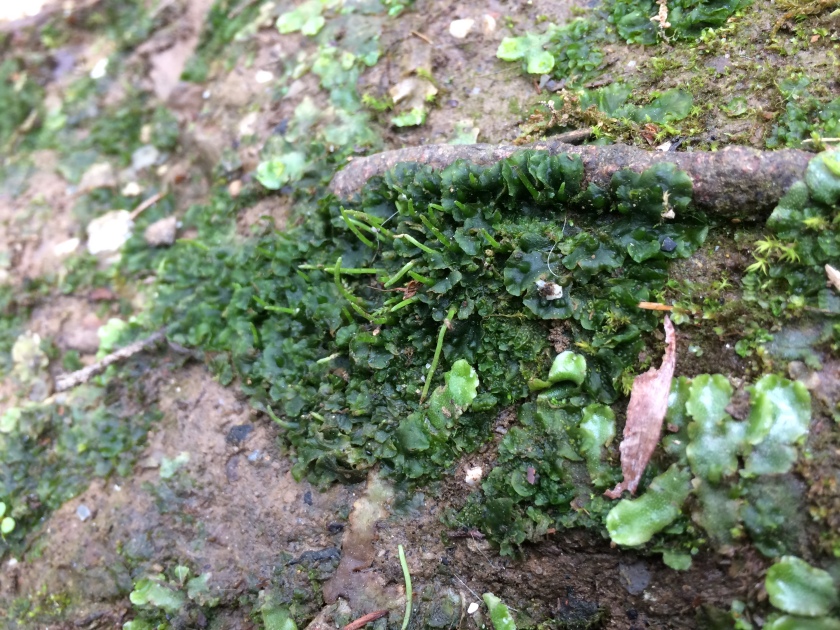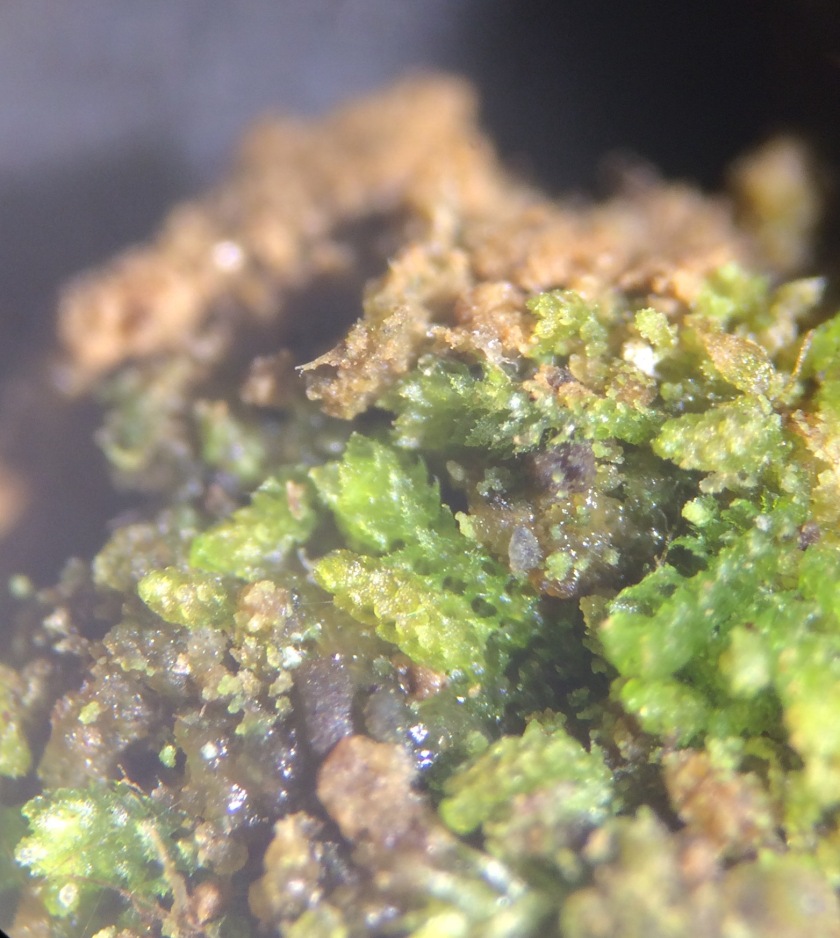I recently saw on twitter that the Cornish bryophyte recorder Matt Stribley had found some really interesting and rare bryophytes along the Truro river, that I really wanted to see! I got in touch with Matt, and he very kindly agreed to show me them, along with a selection of other good local species.
First stop was the local park in Truro, which (being just over the road from Matt) contains a selection of nice species. First up was Syntrichia latifolia, for which this is one of (if not the most) Western site in the UK. It usually grows on silty trees and rocks next to rivers, but has taken up residence in Truro on the path! A little further along the path, some bare patches of mud were home to good quantities of the Hornwort Phaeoceros laevis, a species new to me. Hornworts are a very unusual group of bryophytes; they aren’t mosses, but they aren’t liverworts either! The large female reproductive parts of the plant project high above its rosette growth form.

On the walls of the park, several Didymodon and Orthotrichum species were present, with Schistidium crassipilum and the epically named Bryoerythrophyllum recurvirostrum thrown in for good measure. Amongst a patch of Bryoerythrophyllum, I spotted something very shiny… a ground beetle! None other than Notiophilus bigutattus, a ubiquitous species.

After all of that, we headed down to the Truro river for a real rarity: a minute species of liverwort, Cephaloziella turneri. This species grows almost exclusively in the far South-west of England and Wales, and is found only on crumbly soil among tree roots next to coastal creeks. To add to the difficulty of finding it, the leaves are only 0.1mm long! It had taken Matt many hours (days even) to find the species, so I’m very grateful to him for showing me it! Here is a microscope shot of a very small sample (from a large patch) of C.turneri, note the diagnostic asymmetrical toothed leaves.

On the walk back from the river, Matt showed me a small patch of another nice species: Bartramia pomiformis growing on a large rock. It seemed to grow on the face of the rock with had previously been embedded in the rock face above, thriving with a lack of competition from other species. The spherical capsules on long, red setae contrast with limey glaucous green leaves to make a very pretty and sculptural moss!

Our final site was Idless woods, which contained a whole host of nice species. The main target (which we just about found!) was another tiny, rare Liverwort that Matt had put in the hours to find: Colura calyptrifolia. Our specimen was in the process of being outcompeted by various Metzgeria species, so only a few leaves were visible. Here’s a link to the BBS online field guide page, showing a beautiful example:
http://rbg-web2.rbge.org.uk/bbs/Activities/liverworts/Colura%20calyptrifolia.pdf
Other nice species we found included the Liverwort Cololejeunea minutissima, and the moss Leucobryum juniperoideum. Whilst searching through the clumps of mosses, I found a species which is a personal favourite of mine, the Harvestman Megabunus diadema! I didn’t manage a photo, but wrote an article about the species for the January edition of New Nature magazine (Species focus, page 14):
Click to access 15ec9b_00bf32bbc7514e23a48a38a93c00ad02.pdf
What a great day out! And it bumped my UK bryophyte list up to 174, putting me 15th for the group in pan-species listing.
http://www.brc.ac.uk/psl/group-rankings/bryophytes
I look forward to bryologising again soon, at the BBS Cornwall group meeting in March!

Nice collection. There’s a marine alga genus Erythrophyllum (red leaf) and I suspect this is the reason behind the existence of Bryoerythrophyllum
LikeLiked by 1 person
Thankyou. And that’s interesting, I guess it makes sense!
LikeLike